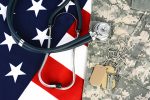The Department of Veterans Affairs (VA) and the Department of Defense (DoD) present very attractive markets to a wide range of medical device and supply providers. However, with more than 18 million enrolled beneficiaries, and the potential for 9 million more to join, these payers must implement standardized, cost-effective procurement and distribution methods that ultimately result in access requirements that differ from the commercial market.
Not only is it important to understand necessary strategic and tactical adjustments required to be effective in these markets, but it is also important to appreciate how dynamic these markets are, with regulatory and policy concerns in constant flux. All of these elements can be effectively managed with minimal impact to the commercial organizations if manufacturers understand:
- How this evolving market works
- Federal procurement mechanisms and how they function
- Best practices for establishing federal-specific value platforms to support preferred use within federal device formularies.
Federal Market Context
The first step in federal market optimization is defining how a product fits within these unique health system structures.
VA Healthcare. Currently, the VA healthcare system, the Veterans Health Administration (VHA abbreviated as VA), services 9 million enrolled Veterans and a minor number of their dependents. The majority of care is delivered via Veteran Integrated Service Networks (VISNs), which include 150 major medical centers; 1,200 community-based clinics; 50 rehabilitation centers; and 135 nursing homes. Many of these facilities have resource-sharing agreements with university healthcare systems and DoD Military Treatment Facilities (MTFs), providing veterans with expanded access to quality medical devices and services.
The VA MISSION Act sets the strategy for a major overhaul of VA-funded care in the private sector. The new rule provides increased funds for veterans to see community physicians. The expectation is that this will prompt more veterans not currently enrolled in VA healthcare to utilize the benefits now available to them in the commercial setting. Medical device manufacturers will benefit most directly through the integrated portion of care, as the VA will provide patients with prescribed and routine medical equipment and supplies after they are prescribed by the community physician.
DoD Healthcare. The DoD provides care to 9.5 million active military personnel, retirees and their family members, including 2.2 million beneficiaries over the age of 65 and approximately 2 million children. The majority of care is provided via the community TRICARE program, with the remaining care provided via the integrated healthcare network. This network includes 55 MTFs, 375 military medical clinics and 250 military dental clinics.
Medical Device Procurement
The VA. The VA utilizes a variety of acquisition procedures to promote full and open competition and meet the requirements of the Vets-First “Rule of Two” statute. VA acquisition vehicles include:
- Standardized and national contracts established by the National Acquisition Center (NAC) and Strategic Acquisition Center (SAC)
- VISN and local agreements
- Competitive blanket purchase agreements (BPAs)
- Federal Supply Schedule (FSS) contracts (firm-fixed price, indefinite quantity/indefinite delivery type contracts with economic price adjustment). FSS contracts provide the foundation for many of VA’s other acquisition vehicles as the vendor has already been found to be responsible and the pricing, terms and conditions have been found to be fair, reasonable, and in the best interest of the government.
Medical Surgical Prime Vendor Program (MSPV)
Most purchases of disposable medical products are made through the MSPV program (managed by the SAC)— a “just-in-time” distribution model with strategic sourcing and volume purchasing. The current VA MSPV-NG program formulary has about 8,000 products.
The VA is in-process of updating the MSPV purchasing model, referred to as MSPV 2.0, in order to allow for a wider range of formulary offerings. MSPV 2.0 is a multi-office effort from NAC, SAC and VHA. It will go into effect by March 2020, with expectations that it will exceed 20,000 products. Under this program, the SAC will award new prime vendor contracts to an as-yet undetermined number of companies—the target award date for these new contracts is November/December 2019. The VHA is responsible for developing the actual formulary of products that will be offered under MSPV 2.0.
VHA has started issuing BPA solicitations for 25 categories of products by VISN (BPAs can be found on www.fbo.gov). Using the tiered cascading model of review, they will determine the supplier(s) for all product categories. Same products will not be awarded to multiple vendors, however, similar products will be awarded. Manufacturers and suppliers, especially FSS contract holders, are encouraged to respond to these BPAs. FSS contract holders will have a leg up over their competition as their pricing, terms and conditions are already negotiated, so the development and review of the proposal will be easier than for open market proposals.
The DoD. Like the VA, DoD procures medical equipment and supplies via a mandatory-use prime vendor program. Unlike the VA, however, the DoD prime vendor program is managed through a separate contract vehicle called the Distribution and Pricing Agreement (DAPA). DAPA establishes the selling price for healthcare related products and authorizes the Defense Logistics Agency (DLA) Troop Support to distribute DAPA products to the military. The two types of DAPAs include:
- Medical/Surgical: Primarily for consumables that are non-medical equipment items
- Medical Equipment: Durable, repairable and portable medical equipment
While many of the products on DAPA are also on the VA FSS, there is no direct correlation between the two. Vendors are not required to have an FSS contract in place to have a DAPA, and while it is common practice for FSS contract holders to offer their FSS pricing to DoD, it is not a requirement. Currently, there are more than 120,000 items on DAPA.
In both the VA and DoD community care settings, medical devices and supplies are reimbursed either within a hospital diagnostic related group (DRG) or reimbursed at Medicare rates and coding. In the integrated portion of care, both the VA and DoD operate independent medical device formularies.
Opportunity for Medical Device Manufacturers
Manufacturers seeking to sell to the VA and DoD often assume that having a FSS contract or DAPA in place serves as a sufficient mechanism for total market access. However, companies need to understand the full scope of VA and DoD procurement landscape and strategically advocate for themselves. It is important to remain price competitive and understand the government’s procurement protocols and varied acquisition vehicles to ensure comprehensive market access. The federal market offers meaningful direct revenue and tremendous spillover exposure but should be approached strategically and effectively.
For instance, the VA procures certain medical devices and consumable supplies through its Pharmacy Benefits Management (PBM)—while the items offered through PBM vary by facility, routine medical supplies (i.e., ostomy bags, catheters, etc.) are available through PBM. Most other devices are procured, stocked and provided through the prosthetics division of the VA. Even with the expansion of community care, it is anticipated that patients will continue to receive their medical devices and recurring consumables through VA. In DoD, however, certain treatment protocols are outsourced to the community. Unlike VA’s community program, the DoD will not provide the medical devices and consumables to its patients, so a DAPA would not yield greater access to the DoD healthcare system.
How to Succeed
The first step in gaining federal market access is to determine if VA of DoD patients present an appropriate population and care base for your product or portfolio of products. Establishing a purchasing pathway (FSS contract or DAPA) early is essential to successful market access. Government acquisition requires different and extra steps than typical commercial procurements—\selling on the open market results in limited utilization of your products. No matter the cost savings of your product, or how innovative or useful the product is, if you do not have a baseline procurement vehicle, like an FSS contract or DAPA, it is unlikely that the government will purchase your offering.
Both FSS and DAPA vehicles create negotiated price lists from which the government can purchase. It is essential to develop a proper negotiation strategy and rationale to defend your offered price. The government will always seek your best commercial price for medical devices and consumables, but it may not be entitled to it.
This is especially true for FSS contracts, which do not guarantee any sales. It is important to evaluate your commercial agreements and find the customer (or category of customer) that most closely aligns with how the government procures similar products. For example, if your customer receives your best commercial price because it guarantees a certain amount of sales per year, then the government is not entitled to this same price under the FSS program. There are many reasons that you may not offer the government your best price, so don’t let them bully you into offering them more than they are entitled to.
Once you have a FSS contract or DAPA in place, you should determine if participating in the VA or DoD’s MSPV formulary will create more meaningful access to the federal procurement space. The VA’s MSPV formulary is higher than base FSS contracts in the agency’s priorities of use. So, while an FSS contract is your ticket in, getting on the MSPV formulary, or obtaining national/VISN BPAs are the keys to total market access.
Finally, it is important to develop a strategic and tactical plan to enter your product into the federal market space. It is often helpful to utilize a top-down approach when considering VA and DoD markets, especially given the level of control the agencies have throughout the procurement process. Early discussions with VA and DoD procurement/contracting professionals can help you to develop a better understanding of how their products will be received by clinicians and patients.
The federal marketplace is vast and complicated, but it is worth the time and resource investment needed to gain comprehensive access. While the acquisition vehicles are different, the means to gaining market-share are like the commercial space—it’s about “boots on the ground” efforts, networking and leveraging relationships to find your place within federal procurement. Often the expense of an experienced federal procurement consultant more than pays for itself in results.







